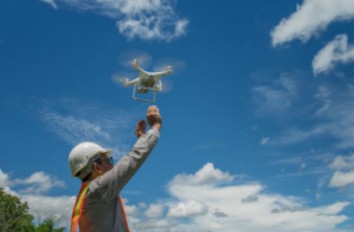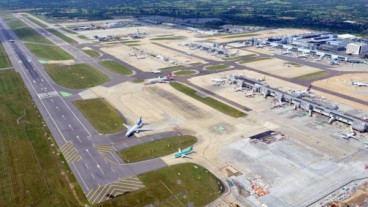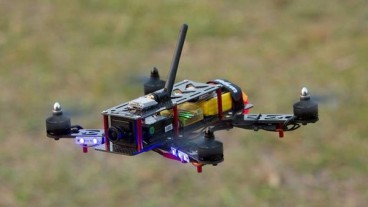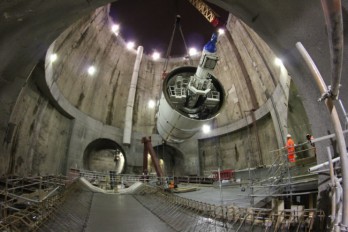Landmark Approval: BVLOS Drones Cleared for UK Rail Surveillance

The UK Civil Aviation Authority (CAA) has authorised Drone Major Group to conduct the country’s first Beyond Visual Line of Sight (BVLOS) drone operations over Critical National Infrastructure (CNI). This is the first instance of BVLOS flights being permitted in non-segregated airspace, allowing long-range drones to operate above functioning railway lines while coexisting with traditional air traffic.
The pilot project is set to begin along a 12-kilometre corridor between Wolverhampton and Sandwell & Dudley Station. Supported by Network Rail, the initiative is intended to support faster responses to service disruptions, monitor trespassing activity, and provide data for improving safety and efficiency. Testing has already been completed along key routes, including the Severn Valley Railway and sections south-east of Wolverhampton station.
Inside the Digital Tethering Technology and the Sustainability Horizon ahead
At the core of this innovation lies Drone Major’s proprietary Digital Tethering™ system. Rather than relying solely on GPS, this method creates a controlled ‘safety corridor’, a virtual path guiding drone navigation. The system continually verifies aircraft positioning, switching to ground-based sensors and onboard cameras when satellite signals are weak, such as near bridges or in valleys.
In the event of deviation or interference, Digital Tethering™ is designed to trigger an immediate hover or safe landing, reducing ground-level risks. This setup is intended to support autonomous navigation, ensuring operational safety in built environments and along active railways.
With initial success, the plan is to proceed with additional trials across other CNI sectors, including utilities, border security, and energy networks. By enabling autonomous inspections and live monitoring, the drones are expected to cut operational delays, reduce safety risks, and deliver cost efficiencies.
The CAA's authorisation contributes to the ongoing development of regulations in drone-based infrastructure management. It also sets a precedent for regulatory frameworks globally, showing how unmanned systems can operate reliably in shared airspace.
Sources: emergencyservicestimes.com, computerweekly.com, techround.co.uk, highways.today, networkrailmediacentre.co.uk
Want to read more like this story?

Harnessing Drone Technology for Highway Construction
Jun, 25, 2024 | NewsIn recent years, the integration of drone technology in civil engineering has revolutionized the in...

Drones maintain construction timetable and budget under control
Sep, 14, 2018 | NewsDrones are a perfect tool to supervise and control a construction process in order to keep the proje...

Capturing Reality with Drones - The future is here for construction business
Jan, 31, 2017 | NewsRapid increase in UAV 3D Mapping technology implementation in various scientific and industrial proj...

Drone owners arrested for disruption in UK Gatwick airport
Dec, 19, 2018 | NewsTwo people were arrested for using a drone, disrupting Gatwick's airport normal operations for sever...

Drones will soon be used in the fight against littering
May, 09, 2016 | NewsThe initiative was taken by Dubai’s Waste Management Department in an effort to keep the munic...

Civil Engineering in the Digital Age: Top Innovations Shaping the Future
Jul, 16, 2024 | NewsThe world of civil engineering is experiencing a significant digital transformation. Innovative tec...
3D printing: team of flying robots to build structures
Oct, 11, 2022 | NewsTeams of airborne 3D-printing drones could one day be used to complete construction projects in dan...

[Video]: Enjoy a drone flight in Crossrail's tunnels!
Mar, 13, 2015 | NewsFor the first time, BBC was allowed to fly a drone along Crossrail's tunnels and the video is provid...

Satellite data and AI drive the next wave of sustainable infrastructure in the UK
Oct, 03, 2025 | NewsThe United Kingdom is advancing the integration of satellite data and artificial intelligence (AI...
Trending

Vertical gardens in Mexico City to combat pollution

Characteristics of Load Bearing Masonry Construction

Taipei 101’s impressive tuned mass damper

Morocco Implements Landmark Dam Perforation to Combat Water Stress in Marrakech

Dutch greenhouses have revolutionized modern farming

The Line at Neom faces feasibility reassessment while construction continues

A new chapter for Sunderland: The £31 million Keel Crossing opens

